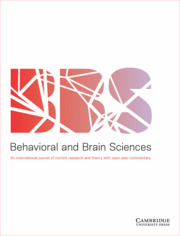Crossref Citations
This article has been cited by the following publications. This list is generated based on data provided by Crossref.
Bickerton, Derek
2007.
Language evolution: A brief guide for linguists.
Lingua,
Vol. 117,
Issue. 3,
p.
510.
Evans, Nicholas
and
Levinson, Stephen C.
2009.
The myth of language universals: Language diversity and its importance for cognitive science.
Behavioral and Brain Sciences,
Vol. 32,
Issue. 5,
p.
429.
Levinson, Stephen C.
and
Evans, Nicholas
2010.
Time for a sea-change in linguistics: Response to comments on ‘The Myth of Language Universals’.
Lingua,
Vol. 120,
Issue. 12,
p.
2733.
Rey, Georges
2020.
Representation of Language.

